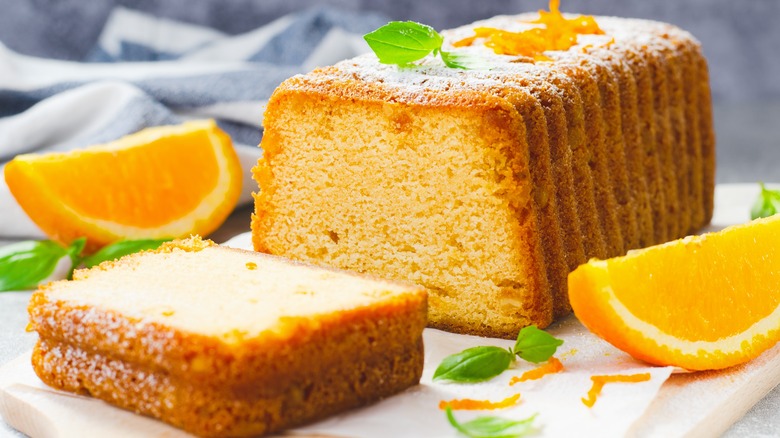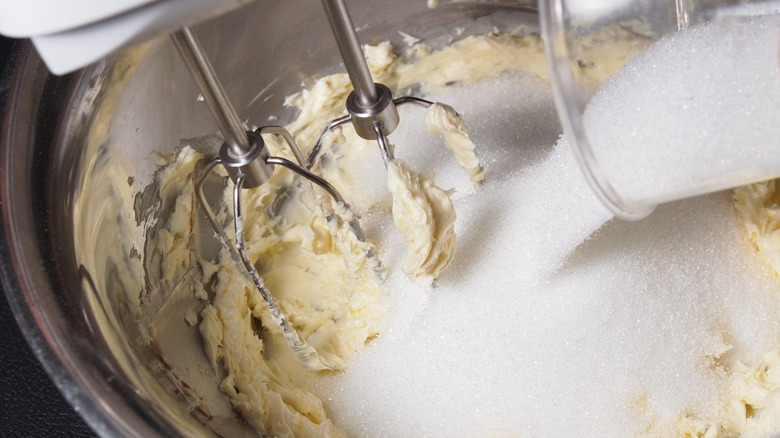How To Give Pound Cake Its Signature Lift Without Baking Soda
You might have noticed that a classic pound cake recipe is quite different from other layer cakes. There's a simple, short list of ingredients with no raising agent, like baking soda or baking powder. In fact, pound cake gets its name from the historic recipe that called for one pound of each of the four ingredients used: butter, sugar, flour, and eggs. Many modern recipes include a bit of vanilla or swap in various dairy products like sour cream or yogurt to add additional flavor to the somewhat plain cake, but never baking soda. What gives pound cake a light crumb texture instead is the technique used to mix the butter and sugar.
Sometimes called "creaming," the action of beating butter with sugar in a mixer adds bubbles of air to the cake batter. The rough grains of sugar help to break up the dense butter, almost like sandpaper roughs up wood. During the mixing, air is trapped in the butter thanks to all the movement, then in the heat of the oven, the air expands, helping to lift the dense batter just enough to make that traditional firm pound cake texture we love.
Creaming butter and sugar is part of good cake technique
When you see a cake recipe that includes the step calling for creaming the butter and sugar, you may have assumed this was simply about mixing the ingredients, like most of the other steps. Recipes usually recommend several minutes of mixing the butter and sugar, which can seem like extra time you don't want to spend when you're working in the kitchen, but this process is critical to get the best texture in a cake, even recipes that include baking soda and powder. That's due to the structure those beaten in air bubbles give a cake. Your cake will be flatter and very dense without the help of aeration.
Creaming butter and sugar is more difficult to do by hand because of the long mixing time, so we'd recommend bringing out your electric mixer to make things easier. Starting with room temperature butter in the mixing bowl, add the sugar, and start with your mixer on low speed to avoid the ingredients flying out of the bowl. Once the sugar is all mixed into the butter, raise the speed to medium or higher. You'll want to stop and scrape in any butter that clings to the side of the bowl after a minute or so. The mixture is ready when you see the color change from buttery yellow to a light, almost white color and the butter is fluffy. This shows that there's a good amount of air, ready to do its job in the oven to turn the cake batter into a perfectly textured masterpiece.

